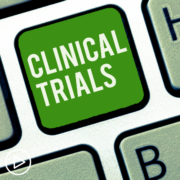Why Is Multiple Myeloma Nearly Twice As Common in BIPOC Communities?
Why Is Multiple Myeloma Nearly Twice As Common in BIPOC Communities? from Patient Empowerment Network on Vimeo.
Why does multiple myeloma impact some BIPOC communities nearly twice as often compared to white Americans? Expert Dr. Joseph Mikhael shares factors that affect diagnosis and treatment of African American and Hispanic American patients — and how to improve health outcomes for BIPOC myeloma patients.
See More From the Myeloma TelemEDucation Empowerment Resource Center
Related Resources:

|

|

|
Transcript:
Dr. Joseph Mikhael:
Almost twice as common in the African American population, it’s diagnosed younger, and the African American population is actually also diagnosed younger in the Hispanic population. And then even though we tell myeloma is having this amazing survival advantage over the last decade, which is true, that advantage has not been seen in the African American population as much as we have seen in the Caucasian population, similarly not as much in the Hispanic population as well. So those are the key highlights. When people have access to those treatments, when there is that kind of equity, we actually see the outcomes, if not the same, are actually better for African American patients. So it highlights, what I often call the three T’s that are not accessed as well in the African American population, triplets, transplant, and trials. So those are some of the key things I like to say. And then when we talk about how we correct this.
I think there was a question about how are we going to do it, that could be a 20-minute answer, but it’s not just a function of having more transplants, triplets, or trials, it is really engaging the community to change this course of my alumni really is an issue of trust and of long-term strategies that engage people in a way that resonates with them, to be able to trust their institution in their hospital or their physician or within their community.
Number one, we know even from studies that we’ve done in Africa and gone on in other countries that, for reasons we don’t really understand the disease is twice as common from its early stage from MGUS right through to myeloma. It’s not an environmental factor, it’s not a later acquired phenomenon, so the baseline risk is significantly higher. But that’s secondly experiencing myeloma, having it has a lot to do with the whole experience that patients have with myeloma from diagnosis through treatment. And we know that, unfortunately, along the way, there’s a significantly longer time to diagnosis, in the African American population which has multiple reasons. Some of it is a lack of understanding, a lack of trust, a lack of education in the physician community. As part of one, the big projects that I’m working on later this year is to educate primary care doctors in primarily African American communities, so that when that man comes in with symptoms that I think of myeloma, they think of diabetes, diabetes, diabetes.
And I want them to think diabetes, diabetes, myeloma. I want it to be added to that differential diagnosis, so it’s a multi-headed beast for the diagnosis. But also as I mentioned before, access and so on all the way through, so it’s a complex problem. We do know that certain side genetic features are more common in African Americans, namely what’s called the translocation t(11;14), which with the right treatment actually can have a better outcome. So it tells us that there is a goal line that we can reach, that can actually get superior outcomes, and yet we’re now in inferior outcomes.




















